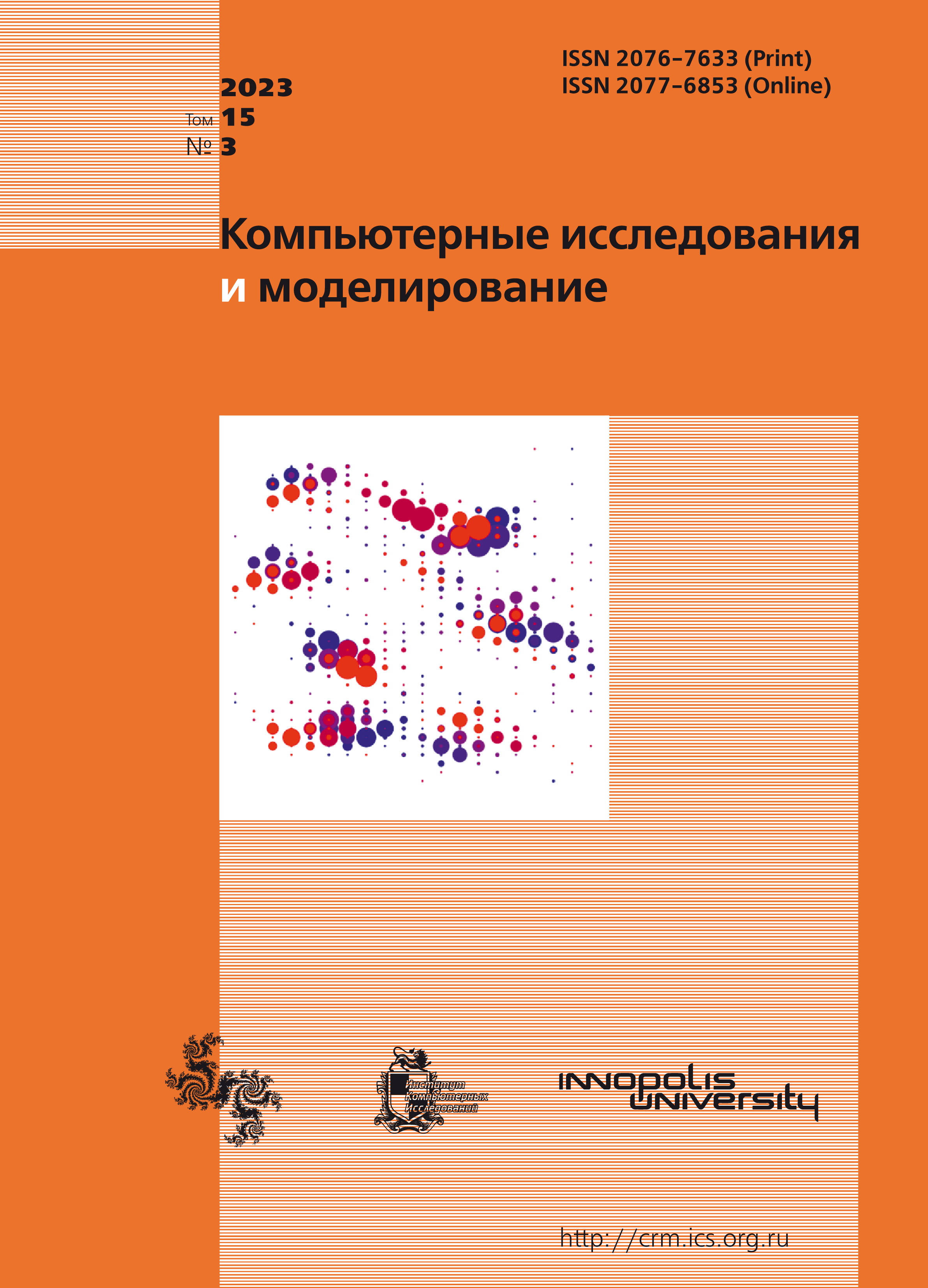All issues
- 2025 Vol. 17
- 2024 Vol. 16
- 2023 Vol. 15
- 2022 Vol. 14
- 2021 Vol. 13
- 2020 Vol. 12
- 2019 Vol. 11
- 2018 Vol. 10
- 2017 Vol. 9
- 2016 Vol. 8
- 2015 Vol. 7
- 2014 Vol. 6
- 2013 Vol. 5
- 2012 Vol. 4
- 2011 Vol. 3
- 2010 Vol. 2
- 2009 Vol. 1
Analysis of Brownian and molecular dynamics trajectories of to reveal the mechanisms of protein-protein interactions
The paper proposes a set of fairly simple analysis algorithms that can be used to analyze a wide range of protein-protein interactions. In this work, we jointly use the methods of Brownian and molecular dynamics to describe the process of formation of a complex of plastocyanin and cytochrome f proteins in higher plants. In the diffusion-collision complex, two clusters of structures were revealed, the transition between which is possible with the preservation of the position of the center of mass of the molecules and is accompanied only by a rotation of plastocyanin by 134 degrees. The first and second clusters of structures of collisional complexes differ in that in the first cluster with a positively charged region near the small domain of cytochrome f, only the “lower” plastocyanin region contacts, while in the second cluster, both negatively charged regions. The “upper” negatively charged region of plastocyanin in the first cluster is in contact with the amino acid residue of lysine K122. When the final complex is formed, the plastocyanin molecule rotates by 69 degrees around an axis passing through both areas of electrostatic contact. With this rotation, water is displaced from the regions located near the cofactors of the molecules and formed by hydrophobic amino acid residues. This leads to the appearance of hydrophobic contacts, a decrease in the distance between the cofactors to a distance of less than 1.5 nm, and further stabilization of the complex in a position suitable for electron transfer. Characteristics such as contact matrices, rotation axes during the transition between states, and graphs of changes in the number of contacts during the modeling process make it possible to determine the key amino acid residues involved in the formation of the complex and to reveal the physicochemical mechanisms underlying this process.
Copyright © 2023 Fedorov V.A., Khruschev S.S., Kovalenko I.B.
Indexed in Scopus
Full-text version of the journal is also available on the web site of the scientific electronic library eLIBRARY.RU
The journal is included in the Russian Science Citation Index
The journal is included in the RSCI
International Interdisciplinary Conference "Mathematics. Computing. Education"







